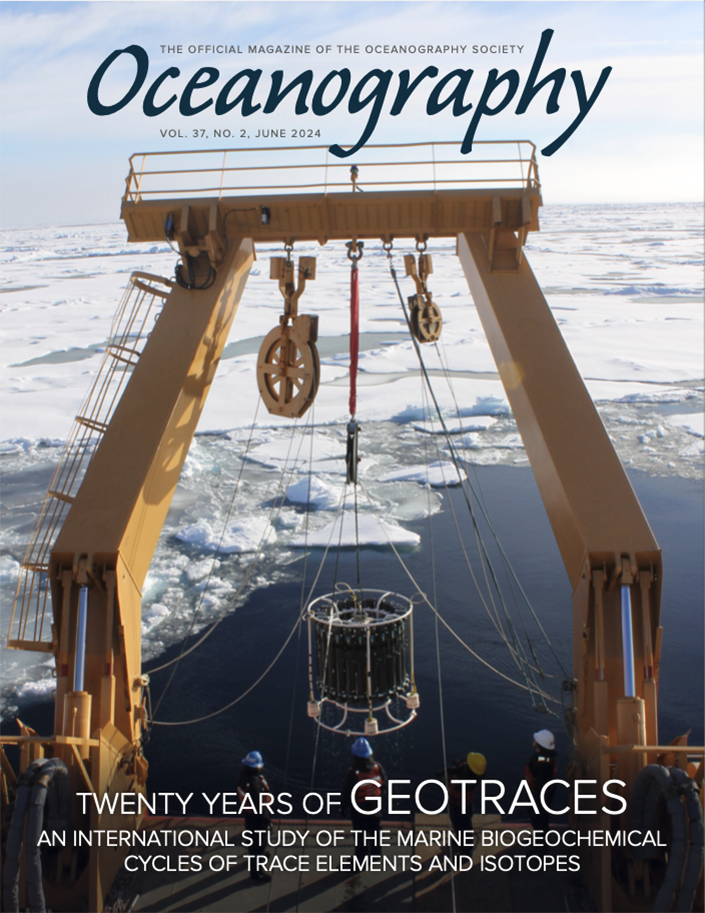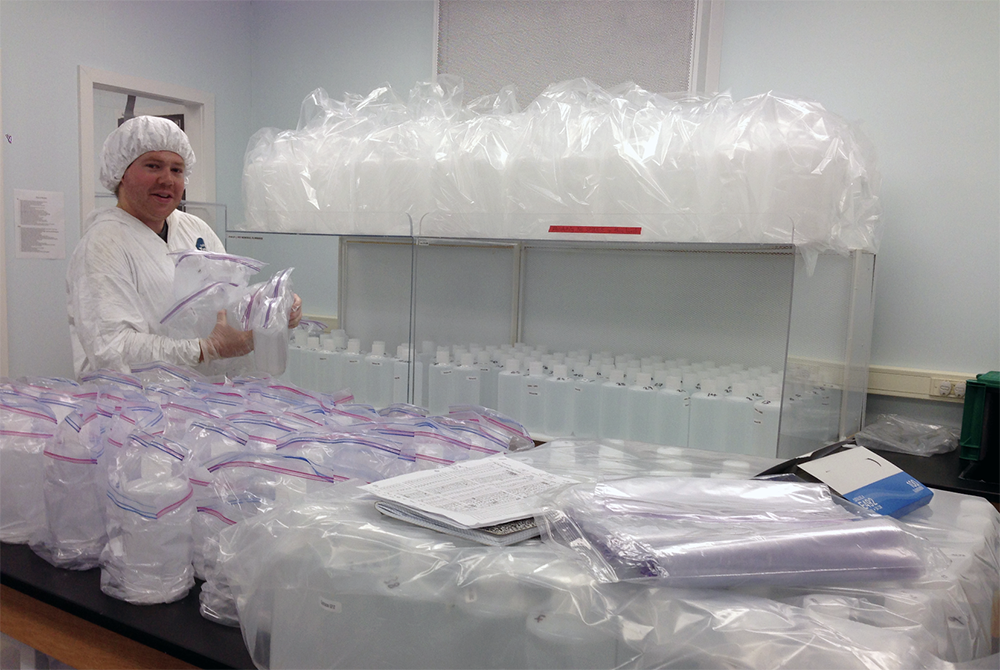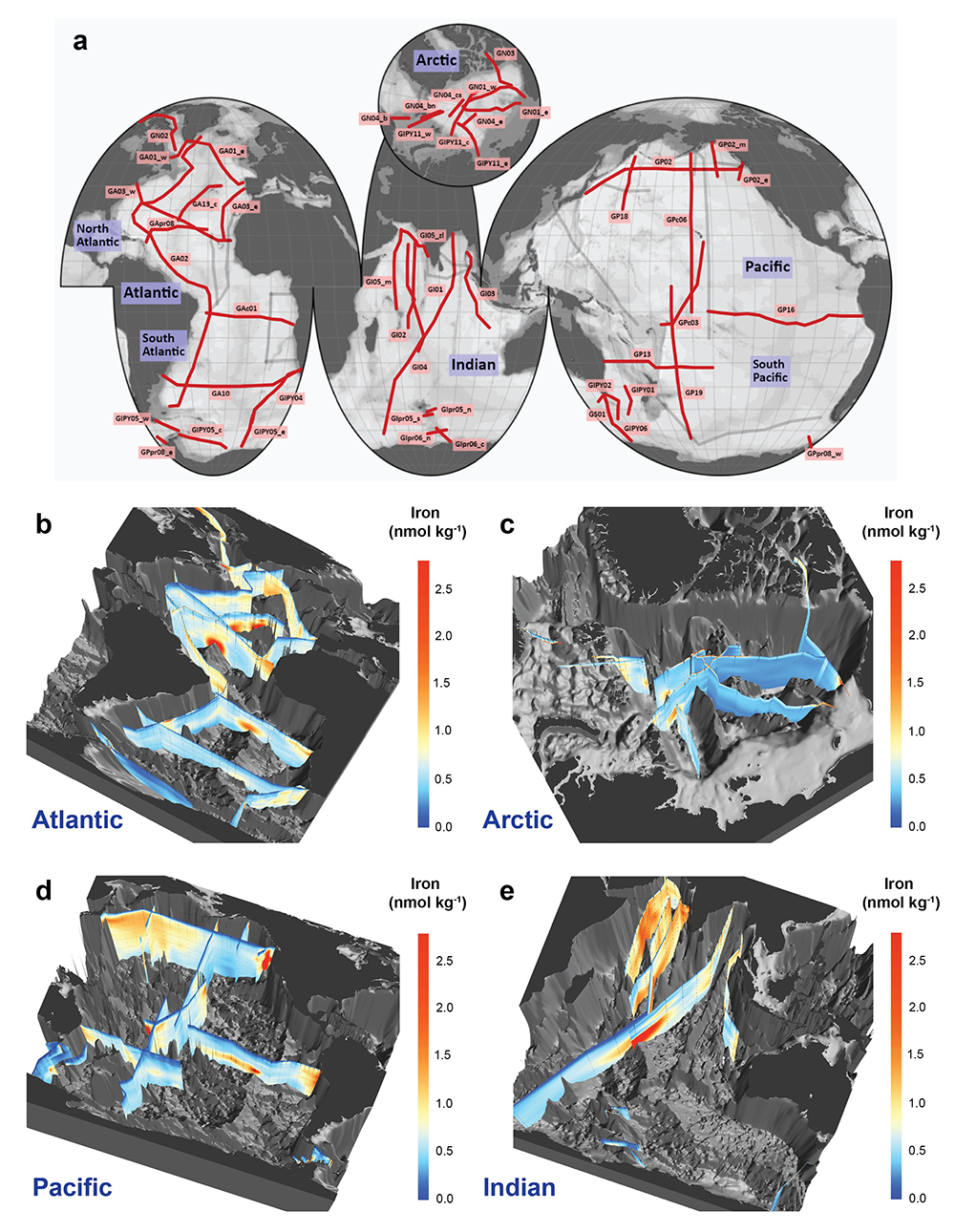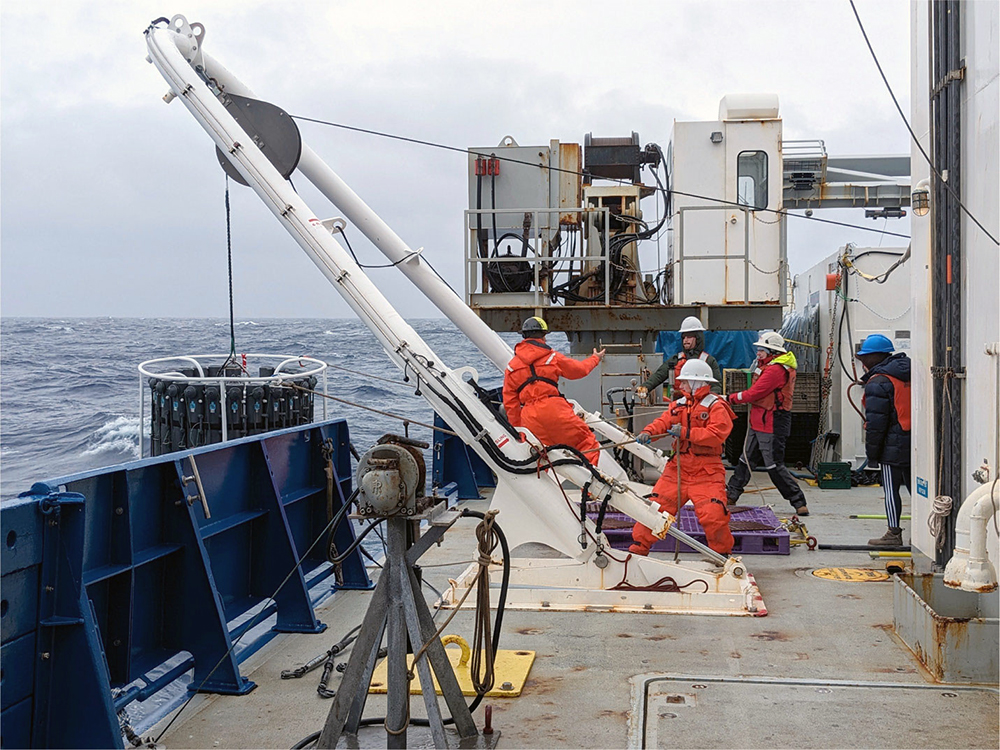By: Dyllan Furness, Science Communication Manager for the Florida Flood Hub for Applied Research and Innovation
All life on Earth — and, indeed, in the ocean — depends on invisible micronutrients. Some are household names such as iron and zinc. Others are less familiar such as molybdenum and selenium.
These “trace elements” are found in small (trace) amounts, which makes quantifying them incredibly complex. Measuring the amount of iron in a sample of seawater, for example, is like measuring the amount of metal found in a paperclip dissolved in 30 Olympic swimming pools.
In 2004, a group of scientists from around the world joined together to launch GEOTRACES, a program to better understand marine trace elements.
Hundreds of scientists in 35 countries came together for GEOTRACES, leading over 150 research cruises and collecting samples from each ocean basin. These efforts and subsequent lab work have revealed fascinating new insights about the origins, role, and marine distributions of marine trace elements.
Tim Conway, a chemical oceanographer at the USF College of Marine Science, led a group of guest editors of the latest special issue of Oceanography titled Twenty Years of GEOTRACES: An International Study of the Marine Biogeochemical Cycles of Trace Elements and Isotopes. The issue includes contributions from Patrick Rafter, chemical oceanographer at CMS (see here), and Dylan Halbeisen, graduate student at CMS (see here), among others.

IMAGE ABOVE: Professor Tim Conway guest edited the recent special issue of Oceanography titled Twenty Years of GEOTRACES: An International Study of the Marine Biogeochemical Cycles of Trace Elements and Isotopes.
Here, Conway discusses the efforts of GEOTRACES, his own contributions to the program, and what the future holds for the study of marine trace elements.
For people who aren’t familiar, what roles do trace elements and isotopes play in ocean ecosystems? Why are they important to measure and better understand?
The marine “trace elements” cover most of the periodic table. Many are essential nutrients for marine life, just as they are for humans. Elements such as iron, zinc, nickel, and cobalt are needed to sustain phytoplankton and allow them to carry out photosynthesis and other metabolic functions. These phytoplankton then fuel the rest of the ocean ecosystem and control ocean carbon cycling.
We need to understand how these “micronutrient” trace elements enter the ocean, how they move around the ocean, and how they influence life. Other elements like lead and mercury are important tracers of pollution, and ocean and human health. Lastly, there are also a lot of elements such as thorium, uranium, or radium which provide essential timing constraints on oceanographic processes such as ocean circulation, particle sinking rates, and fluxes of elements in and out of the ocean.
The periodic table is an amazingly useful toolbox for oceanography. The snag is that many of these elements are only dissolved in seawater at tiny concentrations.
The goal of GEOTRACES has been to measure trace elements throughout the entire ocean. How has the program been able to accomplish this huge undertaking?
As you might imagine, the very low concentration of these elements in seawater means that it is very hard to collect water samples cleanly and analyze them reliably. Many methods were element or laboratory specific, and by the turn of the century, global coverage remained very sparse.
In 2003, the community came together to recognize that we would never understand many geochemical processes in the ocean without much greater coverage of the distributions of many elements in the ocean, and, importantly, measurement of many different elements on the same seawater sample. This led to a GEOTRACES science plan which laid out cruise lines or ‘sections’ where we should go to best understand the processes of interest. These sections were divided between 35 different countries, all funded by their own national funding agencies. These many national efforts were coordinated by international committees and rigorous intercalibration between labs and groups to ensure data could be combined into a usable global product. Indeed, this is one of the successes of the program — all the data is publicly available in data products or as visuals in the eGEOTRACES atlas.

IMAGE ABOVE: Tim Conway as a postdoc with lots and lots of water samples. Courtesy of Tim Conway.
How does your research focus intersect with the GEOTRACES program and its goals?
My research has focused on developing and using methods to measure the isotopic composition of many of the trace elements such as iron, zinc, or cadmium – and then use these tools to address important science questions. For example, these isotopic compositions provide us with extra insight over how much iron is in a sample. It can help us ‘fingerprint’ the iron and figure out where it came from, whether it be atmospheric dust, marine sediments, or undersea volcanoes.
In the case of the other nutrient elements like cadmium and zinc, these isotopic compositions can provide fundamental insight into how these elements move through the oceans and ecosystems.
I was lucky enough to be a postdoc at the time the program was really getting going, and I carried out research on some of the first UK and US cruises in the Atlantic. GEOTRACES gave me the opportunity to make some of the first ‘sections’ of these parameters in the ocean.
The exciting thing is that even though we now know so much more about the distributions of the trace metals and their isotopes, we are raising as many questions as we are answering, stimulating many more research avenues. Indeed, my research now focuses on answering a lot of these questions.
Describe some of the approaches and methods used to sample and measure trace elements.
As I mentioned some of these elements are only present at very low concentrations in seawater. For example, the typical concentration of iron is around 0.000000025 g in each liter of seawater. That’s tiny! And we have to collect samples from rusty ships, with processing done by people who are basically full of iron. So, we must be exceptionally careful to develop and use metal-free sampling systems, process samples in ‘clean’ air filtered laboratories with people in clean suits. If you’ve ever seen NASA footage of technicians in clean suits when satellites are being developed, it’s similar. This way we get representative samples of the ocean, and not just contamination.
GEOTRACES methods are built on decades of experience but have aimed to standardize and share techniques globally. Most countries make use of metal-free bottles on CTD rosettes to collect water ‘profiles’ through the ocean, and surface samplers called ‘towfish’ that are deployed outside of the ship’s wake to collect surface water. Atmospheric particles are carefully and cleanly collected only when the collectors are not downwind of the ship’s exhaust. It’s about constant vigilance and data quality control.

IMAGE ABOVE: At top, a global map shows GEOTRACES cruise sections and process studies from which dissolved iron concentrations are available, taken from the eGEOTRACES electronic atlas. (b–e) Three-dimensional ocean basin views show plots of dissolved iron concentration sections from the Atlantic, Arctic, Pacific, and Indian Oceans, respectively. Graphics by Reiner Schlitzer, Alfred Wegener Institute.
What have been some of the biggest discoveries from GEOTRACES so far? How do these findings advance our understanding of the ocean?
There are a few standout discoveries. From my perspective, one would have to be the discovery of just how important hydrothermal vents are for adding iron to the oceans, compared to the pre-GEOTRACES view where most iron was thought to precipitate at vent sites. The US cruise which traced a ‘hydrothermal iron plume’ over thousands of kilometers from the East Pacific Rise really stands out – and made the front cover of Nature. Similarly, we’ve really shown that iron coming from marine sediments can also travel long distances.
My article in the special issue really highlights a paradigm shift in thinking about how iron enters the ocean. I think the large datasets have led to another fundamental shift in thinking, namely the integration of ocean circulation and the Southern Ocean in driving global distributions of many of the trace elements. But there is really so much transformative science to choose from.
What does it mean to you to edit this special issue of Oceanography?
It’s been a real pleasure really, and something of an honor. I am really excited for the more general oceanographic audience to see some of the great science that has come out of the program so far. We tried to feature geographically distributed and early career scientists where possible, with views from scientists who have been instrumental in driving GEOTRACES, to younger scientists who have made their careers because of this program, to current student perspectives. A real strength of GEOTRACES has been the level of international collaboration and cooperation.
Now that the cruise phase of GEOTRACES is coming to an end, what next steps are you most excited for?
I’m actually still really excited about the cruise section phase – in fact samples from the recent US expedition to the Amundsen Sea just arrived back at USF, and we are collaborating on some international sections. So, there’s a huge amount of cool science that hopefully will come out of those.
I’m also very excited about the prospect of process-led studies which will target questions that have come out of having these large datasets. For example, I’ve already been involved in process studies looking at seasonal cycling of dust and iron to the Sargasso Sea, and one focusing on how submarine groundwater supplies nutrients to the West Florida Shelf. These projects are a way to focus in on specific key questions that are fundamental but too localized for whole ocean sections.
Marginal seas are a fascinating environment with lots of biogeochemical questions that have yet to be answered. We are proposing to do a future Gulf of Mexico wide project to look at how groundwater and rivers supply trace elements to the region, influencing ecosystems.
Lastly, and this is nicely touched on in the last article in the special issue, I’m excited for the nascent BioGeoSCAPES program which promises to provide insight on microbial ecosystem function and respond to climate change, fusing GEOTRACES findings with developments in proteomics, metabolomics, and microbial biochemistry. I’m especially excited by recent faculty hires here at CMS in fields of chemical oceanography and phytoplankton ecology which will bring these strengths to USF and lead to new interdisciplinary findings.
